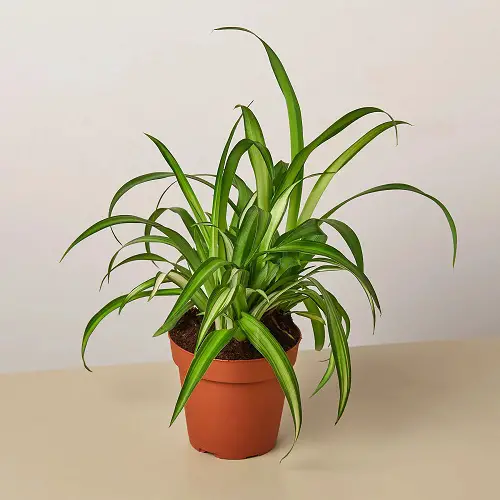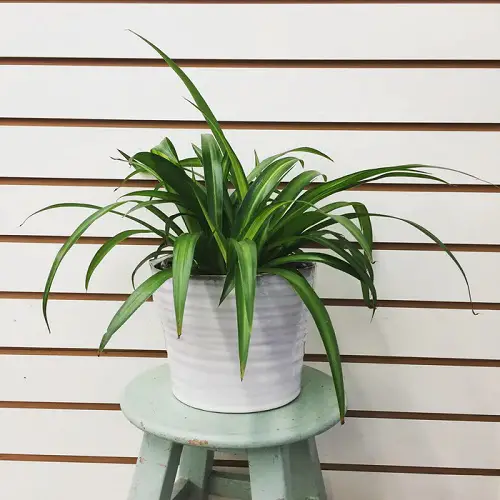Hawaiian Spider Plant is a must-have indoor specimen, thanks to its bright foliage with a mix of green and yellow! Read ahead!

Hawaiian Spider Plant might come across like a regular spider plant but it stands out with its slightly more slender leaves with more vivid variegation. If its pictures tempt you into growing it, read ahead for all the details!
Read about the Spider Plant Care Indoors here
Hawaiian Spider Plant Information
The Hawaiian spider plant is an easy-to-grow houseplant, popular for its arching light green and cream leaves that turn dark green with age. In the right growing conditions, the plant also blooms tiny white flowers.
This beautiful plant is different from its other relatives. It appreciates bright sunlight and grows up to 16-24 inches tall and 12-18 inches wide.
Check out Different Varieties of Spider Plants here
Spider Plant vs. Hawaiian Spider Plant
There are a few similarities between these two plants—both of them are from African territory, enjoy humidity, do well in less water and without direct sunlight. They both grow fast and produce plantlets.
The difference between the spider plant and the Hawaiian spider plant is in appearance. The Hawaiian spider plant features dark green leaves, with a bright cream hue. The leaves of spider plants, on the other hand, are not that long and slender and have less bright colors.
Read about Spider Plant Benefits here
How To Propagate Hawaiian Spider Plants?
You can easily propagate these plants using plantlets that they gro. Simply detach them from the mother plant and grow them in a well-draining potting mix.
Requirements for Growing Hawaiian Spider Plant

Location
To ensure the color on the leaves always stay vivid, keep the plant in a spot where it gets bright and indirect sunlight all day long. It won’t mind staying in a bit of shade but that is going to dull the color of the foliage.
Soil
Grow the Hawaiian spider plant in soil that contains plenty of organic matter, such as coco coir, perlite, or vermiculite, to create the right balance of well-draining growing medium.
Water
Allow the soil to dry out between waterings; this plant doesn’t ask for much moisture and hates overwatering, as it can lead to root rot.
In winter and fall, when the temperature decreases, reduce the watering and water only when the topsoil seems dry. Do the same if you’re growing spider plants indoors in low-light, moist or cold areas
Temperature
The optimum growing temperature falls in the range of 70-90 F (21 C – 32 C). However, it can tolerate temperatures down to 35 F (1.6 C) and up to 100 F (38 C).
Hawaiian Spider Plant Care

Fertilizer
Fertilize with a 3:1:2 ratio fertilizer, once a month, according to the instructions on the fertilizer packet, in spring, summer, and early fall.
You can also use balanced liquid fertilizer, which you use for other houseplants, after diluting it to 1/4 of its strength, once in 6-8 weeks.
Pests and Diseases
Be careful about spider mites and mealybugs. You can take care of them both with a neem oil solution or an insecticidal soap.
Spider plants are prone to tip burn, causing the tips of the leaves to turn brown. This can be caused by overfertilization, dry soil, low humidity, or a buildup of salt and minerals that are found in some public tap water.


